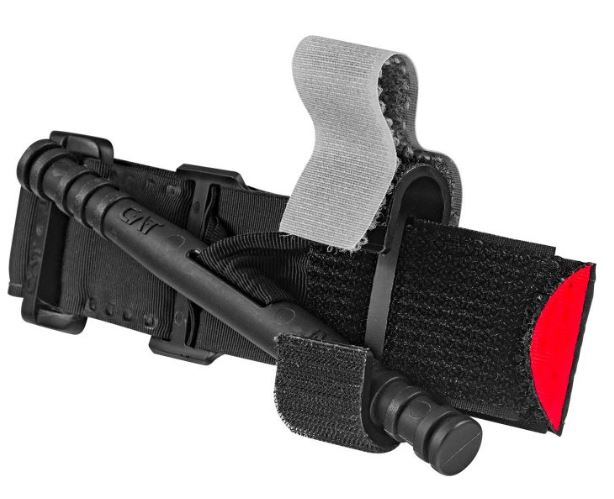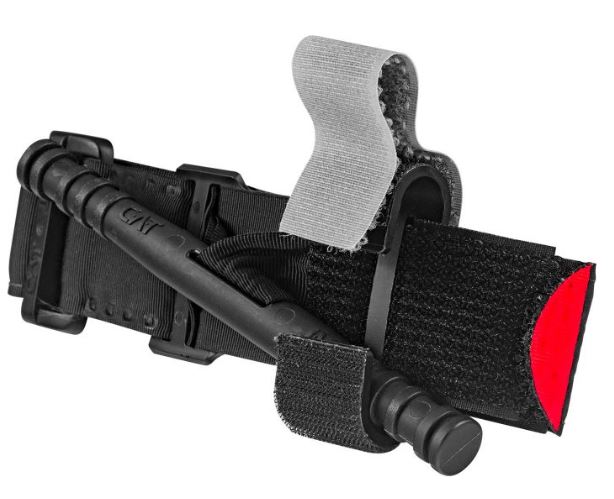TOURNIQUET HEMORRHAGE CONTROL for limb, windlass, Gen.7 CAT
Valid Article
TOURNIQUET, HEMOSTASIS, + windlass
Definition
A strap and windlass type tourniquet for quickly stopping massive limb haemorrhage.
A strap intended to be wrapped around a patient's limb (arm or leg) and manually tightened to reduce blood circulation to or from the portion of the limb distal to where the device is applied. It has a fastening mechanism that allows adjustments to the degree of tightness.
Specifications
Technical specifications
- 3.7 cm wide tourniquet strap, long strap accommodates all extremities
- Lightweight and compact
- Dual locking systems maintain constant tension and prevent accidental release
- Quick release, snap-lock buckle design allows rapid re-routing of the strap around limbs without rethreading
- Aluminum windlass manufactured from a solid piece of aircraft aluminum
- Two high-impact plastic tri-rings (molded Acetyl) secure the windlass
- Padded to prevent pinching skin and pulling hair
- Label for writing the time at which the tourniquet has been placed.
- Colour: black (the blue version is reserved for training purposes only)
Instructions for use
ONLY AFTER FAILURE OF A COMPRESSIVE DRESSING in the event of MAJOR BLEEDING of a member, engaging THE VITAL PROGNOSIS
The only exception where you can pose the tourniquet immediately, without trying a compressive dressing: In the triage zone, in case of massive influx and in case of major bleeding which is life-threatening.
- The installation of an effective tourniquet is always painful: inject 10 mg of morphine in SC before the installation of the tourniquet or immediately after.
- Position the tourniquet 5 cm above what is bleeding, and never on a joint.
- Put the tourniquet even on the skin, flat and in tension before tightening it.
- Tighten the tourniquet by turning the bar and wedging it in one of the 2 fins for the tourniquet until the bleeding stops.
- NOTE THE TIME OF LAYING on the tourniquet AND in a highly visible manner, for example on the patient's forehead, preceded by the letter H (ex: H: 23:27)
- Evaluate effectiveness: bleeding should stop
- If the bleeding continues:
- Tighten the tourniquet
- +/- Compressive dressing
MSF requirements
Tourniquets are an effective means of stopping life‐threatening external bleeding from limb injury.
Their application can be life‐saving in some situations.
The pneumatic tourniquet EANETOUR2I- is not adapted for use outside of the operation room. The CAT model is less expensive, less cumbersome in terms of size and easier to put in place in emergency situations.





![[KMEDMHAE23-] (mod AMP) MEDICAL EQUIPMENT 2021](/web/image/product.template/574351/image_256/%5BKMEDMHAE23-%5D%20%28mod%20AMP%29%20MEDICAL%20EQUIPMENT%202021?unique=bf82f3a)
![[KMEDMHEE321A] (mod emergency) COMPLEMENTARY RESUSCITATION EQUIPMENT 2021](/web/image/product.template/574367/image_256/%5BKMEDMHEE321A%5D%20%28mod%20emergency%29%20COMPLEMENTARY%20RESUSCITATION%20EQUIPMENT%202021?unique=d19c638)